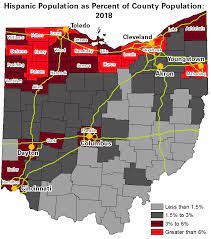
In January, president Joe Biden issued an executive order restricting asylum applications along the southern border of The US. This is a huge issue for those seeking to leave Cuba, Venezuela, Nicaragua, and Haiti, as these individuals now have to apply to a parole process that allows up to 30,000 migrants to arrive in The US each month. Additionally, the qualifications are steep to be accepted into the parole process. In order to be accepted, applicants must pass background checks, have a valid passport, be able to buy airfare, and demonstrate that they have a sponsor with legal status in the US who can support them financially.
The central message of this article is that this executive order makes things extremely difficult and dangerous for those wanting to leave their countries and come to the US. Most notably, those from Cuba, Venezuela, Nicaragua, and Haiti. When reading the article, it’s hard not to feel bad for these people, especially those wanting to leave Cuba and come to the US. In the article, you can see how the people that are affected by this executive order are feeling, and how frustrating it is for them. The journalist focuses on a Cuban woman who was affected in the worst way. Struggling to make ends meet in Havana, Cuba, she planned to leave for the US a week before this executive order threw a wrench in her plans. Because she does not have proof of a sponsor in the US that can support her financially, she is ineligible for an asylum in the US, and would be turned away at the southern border. Because of this, she is left with three options. She can stay in Cuba and wait for possibly years to get accepted, she can head to Mexico and wait there to get accepted or she can try to make it to Florida by Raft.
This article contains very little quantitative data. The article included that roughly 306,612 Cubans, over 2% of the country’s entire population, crossed the US southern border in 2022 due to Cuba’s economic collapse. This is important because the US can expect a similar number of migrants from Cuba in 2023. That was the only quantitative data presented in the article. It would be helpful to see a graph that shows the number of migrants from Cuba, Nicaragua, Venezuela, and Haiti coming to the US each year. This would be helpful because it would show whether the number of migrants coming to the US from these countries are increasing, decreasing or staying the same. If these numbers are increasing, this recent executive order could be a huge issue in the upcoming future.
The article includes qualitative data from primary sources. The article includes quotes from an interview with a woman wishing to leave Cuba and seek asylum in the US. The interview shows how the recent executive order has made things very complicated and difficult for her, as she now has to go through a very long process of waiting and becoming eligible to enter the US. The article also includes quotes from an interview with Adam Isacson from the Washington Office on Latin America. The interview gives us a better understanding of the recent executive order, as Isacson explains how difficult it is to seek asylum from Cuba, Nicaragua, Venezuela, and Haiti. Isacson also explains how the executive order targets those who are poor and makes it much harder for those in poverty as opposed to middle class migrants. The article also includes quotes from an interview with a lawyer from Havana, Cuba. The interview shows that this is a very real problem in Cuba right now, as many Cuban citizens are wishing to head to the US but can’t due to the recent executive order. It would’ve been helpful to get President Joe Biden’s point of view on the issue, and to see what went into the making of this executive order. This would be helpful because we could see why this executive order was put into place and get a better understanding of the US point of view when it comes to the current issue.
Lillian Perlmutter uses qualitative data to give readers a better understanding of the current issue. Perlmutter could’ve done a better job providing quantitative evidence so readers can gain a better understanding of just how big this issue is. The story of how the recent executive order is affecting people in Cuba is a sad one. When reading the article, it’s very important to read Isacson’s quote from the interview. “It’s a huge opportunity for anyone in one of those passport offices who wants a bribe. It has become a rich and middle-class migrant program only. And migrants with fewer means are the most threatened.” This quote tells you all you need to know about the recent executive order. It shows that what the executive order is really trying to do is eliminate all migrants coming to the US that are fleeing poverty from Cuba, Nicaragua, Venezuela, and Haiti. This article outlines the underlying motives of the US government when it comes to immigration policies in Latin America, and the underlying racism in the US government.
Source
“Thousands of Cubans left scrambling after new US asylum policy” Al Jazeera 26 January 2023
